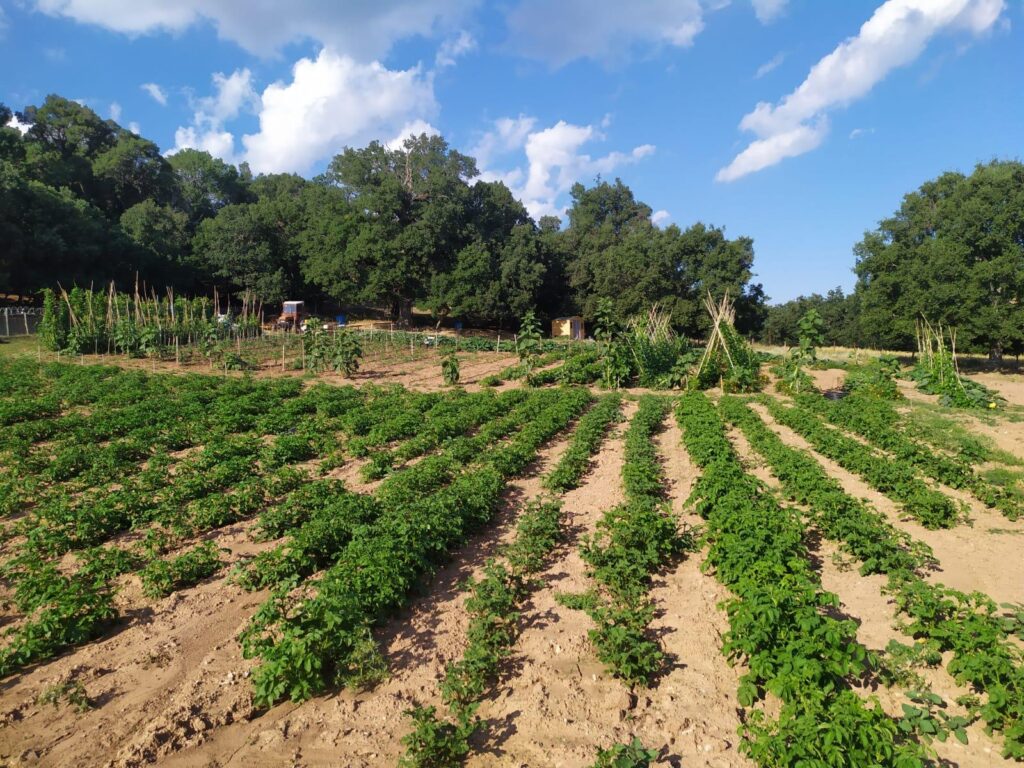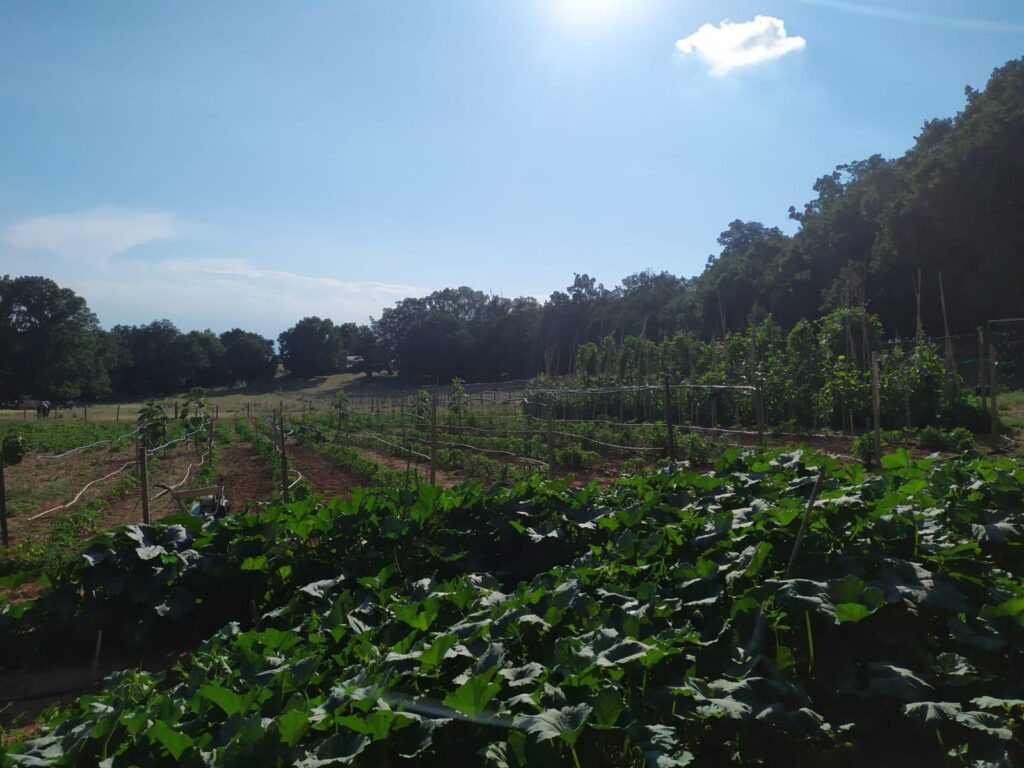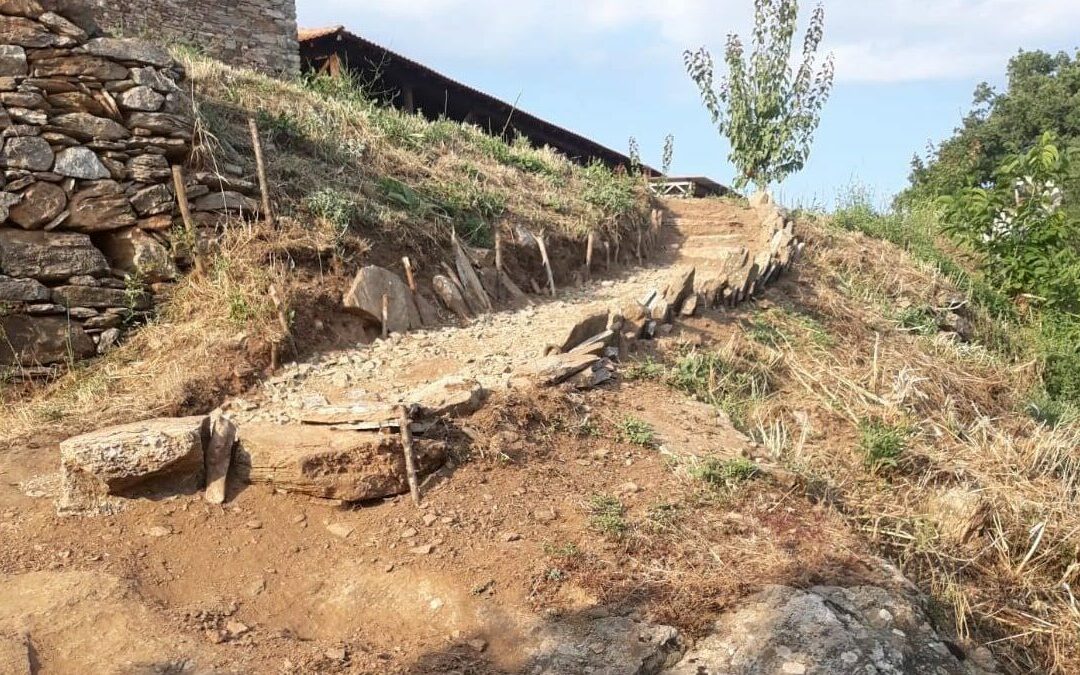An interview with James on his stay at a Greek Orthodox monastery
This is an interview with James on his WWOOFing experience on a Greek Orthodox monastery in Northern Greece. He stayed there for 2 months in 2019 and in 2020. The interview was done at Dio Pigadia – our small permaculture farm in Greece.
Tell us about the monastery
Saint John the Forerunner is a Greek Orthodox monastery run by sisters from all around the world in the Larissa Region, Northern Greece. It has been functioning for the past 20 years by volunteers and donations. They live, work and die in the monastery all in faith. They seasonally rotate through volunteers with a maximum of 13 volunteers at a time. People come from around the world, friends, volunteers and believers to help contribute to the monastery and its purpose. Their arm was to create a heavenly place, taking care or animals and living in harmony in nature. Most people were believers of their faith, which I was not. They were still happy to host and accommodate people who do not need to share their same beliefs. There’s more information on their mission here.
When were you there?
Mid June – End of August, 2019 and again in 2020
How did you find them?
I stumbled across the monastery on WWOOF. I thought, why not, because I looked like a funky place to go visit. I like the absurd path you can take in life.
Why did you go there?
Because I’m curious.
What did a typical day look like?
I would wake up quite early because I was there in the summer. It was usually quite hot. I would do vegetable picking in the mornings, and then move on some construction work. I worked on building staircases using big stones, making gates using welding and would make gates or enclosures for the animals. I also helped with cutting down trees. We would have our meals cooked for us, so every lunch we would sit in the main dining area on the patio. After lunch was free time where I could be found hiking on the mountain, creating sculptures or chatting with friends. Then at 6pm we got back to work until around 9pm.



How did you get to know the people there?
We often did our work together, sharing the same space and time. In the afternoons we would some times spend our time hanging out together or working on side projects together.
What did you eat?
Every lunch time, the sisters would make lunch for us. Lots of vegetables, fruits and eggs. They did not serve meat, although we had fish twice. They made the best cheese from the goats and sheep we lived with. People used to make desserts and sweets as a little treat. I made a fruit salad once. They blessed the food before we ate it (though it was behind closed doors). We weren’t allowed to cook lunch as there was a sister in charge of cooking for the whole year. But dinner was open season.
What was one of the most important things that you learned?
I learnt some big things about my own life. Spending time alone was important to me. I met a lot of interesting people, had interesting conversations and made connections with people from across the world.
How did that experience impact your daily life and routine after leaving the monastery?
It made me realize that going somewhere on your own and to a place that you like (or a country like Greece) isn’t that hard. It’s actually very gratifying. People can be scared of leaving their homes and their routines and so was I. My old routines didn’t match my energy or align with my beliefs. And I’m glad that I’ve worked on changing that.
